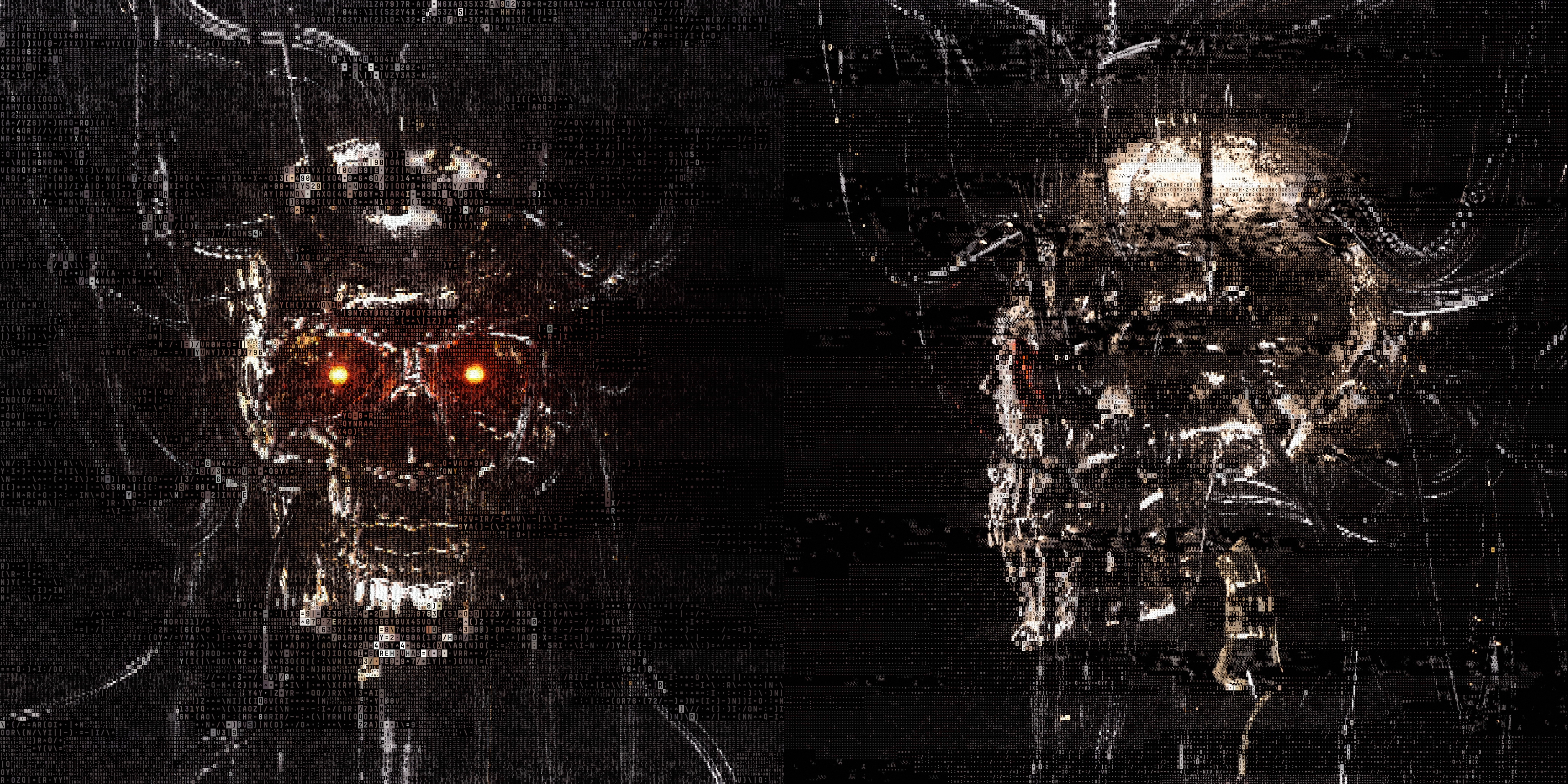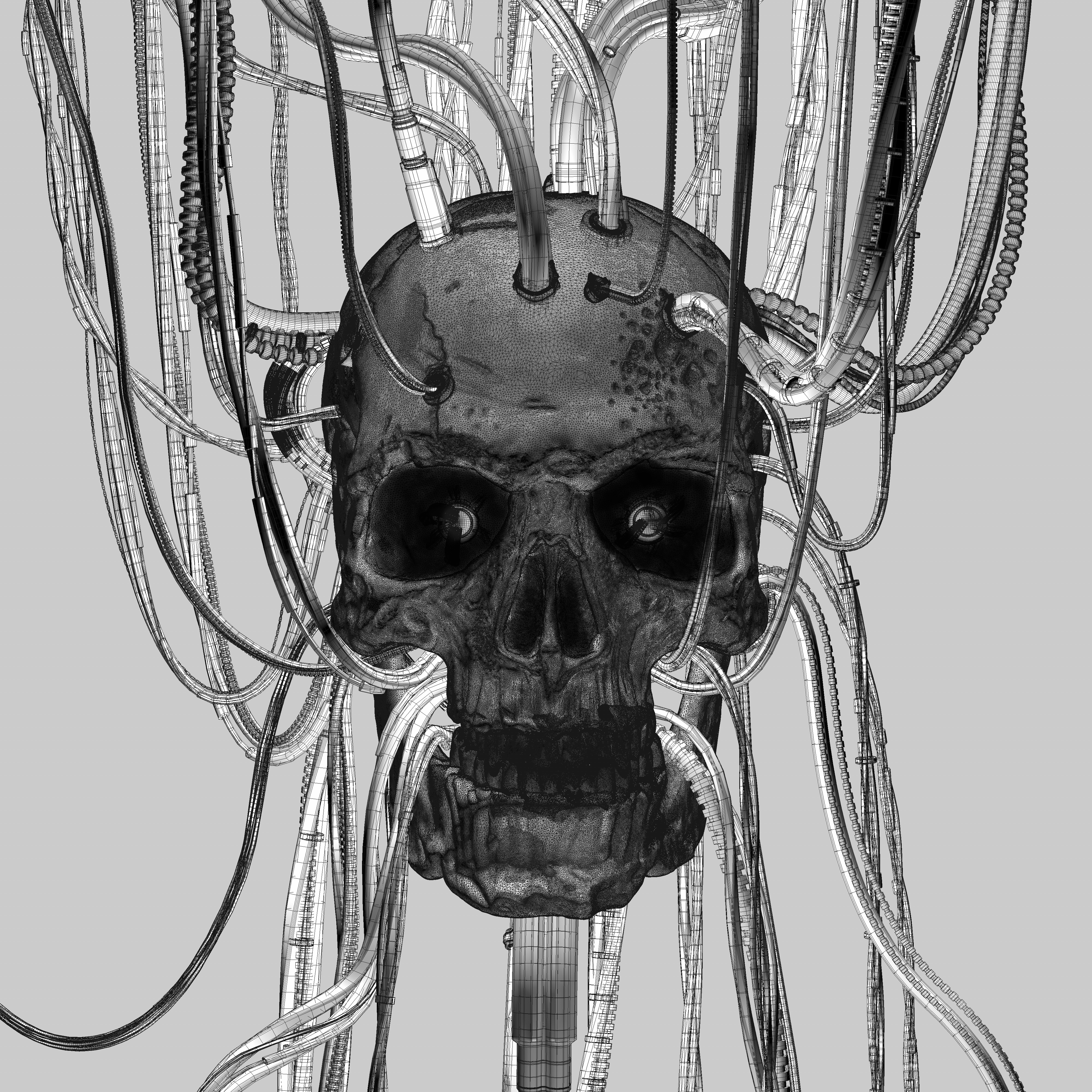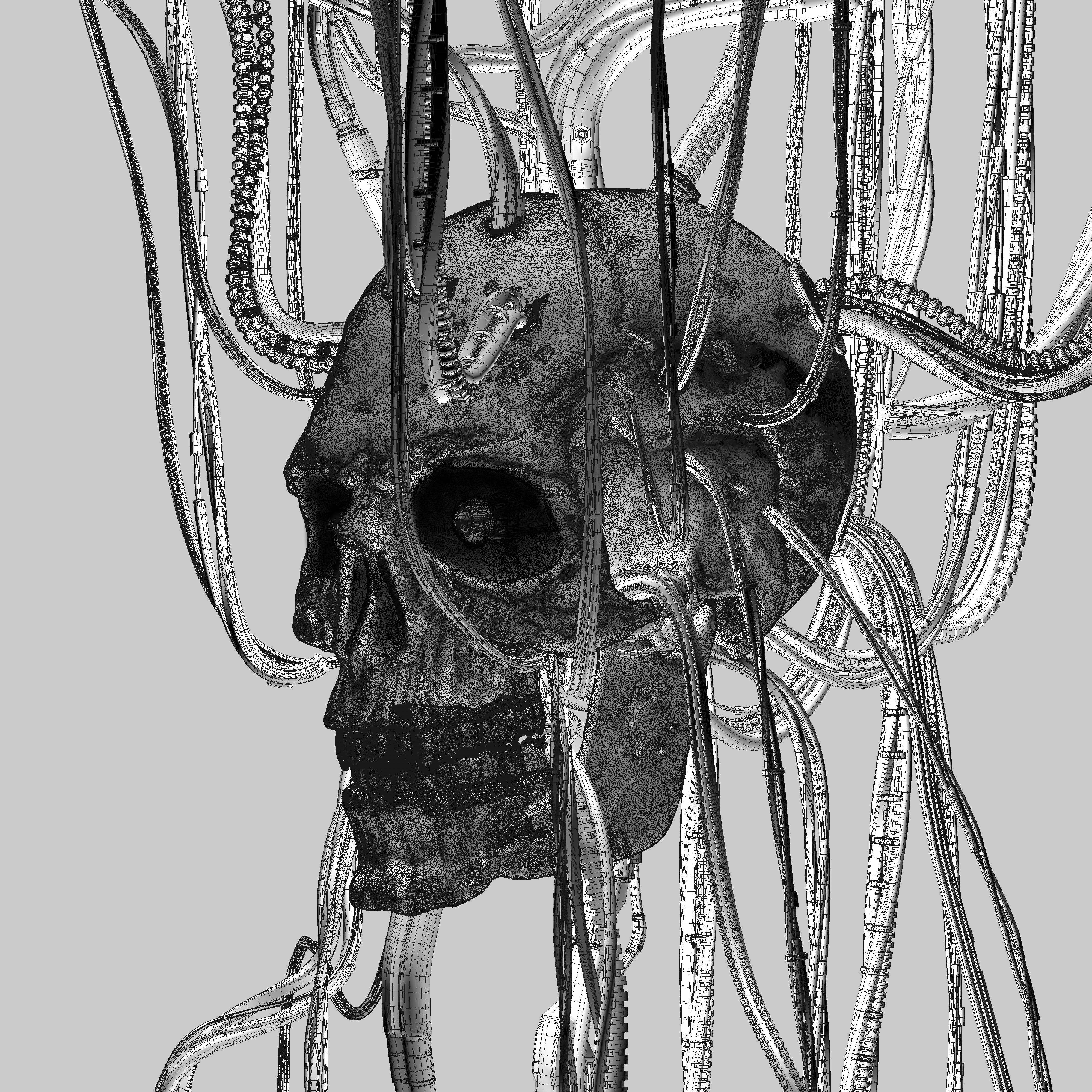History of Bitcoin
September 2025 ––Munkowitz was commissioned by Smashtoshi to create a bespoke piece of artwork for Bit: The History of Bitcoin, an ultra-premium, limited-edition art book that brings together 128 unique digital artworks exploring Bitcoin’s rich history. The book is paired with an interactive digital companion that offers in-depth articles from leading writers and thinkers, bringing to life the moments and narratives that shaped Bitcoin’s evolution — and making them accessible to audiences around the world. Munky’s work sits within this context as a mythic meditation on power shifting from centralized empires to decentralized code, reflecting how Bitcoin resonates not just as money, but as cultural prophecy.
The fading visages of power are digitized and dissolved into pure code — forms that once carried flesh now flicker between artifact and algorithm. Built in high-detail 3D geometry and staged under studio lighting, they were treated like relics under examination. From there, the imagery was processed in Houdini, where each pixel was replaced by fragments of Bitcoin’s source code. The result is an image that hovers between corporeal and cryptographic, presence and absence. The iconic “laser eyes” meme, often playful in internet culture, is recast here as an ominous beacon of sovereignty and transition.
Death of Kings, Rise of Code stands as both artifact and omen — an image that marks the death of centralized "kings" and announces the rise of an immutable, decentralized ledger. It asks viewers to consider what endures when empires fall and what it means for power to be written in code. The final question it poses is simple yet unsettling: What happens when code becomes the crown?
The fading visages of power are digitized and dissolved into pure code — forms that once carried flesh now flicker between artifact and algorithm. Built in high-detail 3D geometry and staged under studio lighting, they were treated like relics under examination. From there, the imagery was processed in Houdini, where each pixel was replaced by fragments of Bitcoin’s source code. The result is an image that hovers between corporeal and cryptographic, presence and absence. The iconic “laser eyes” meme, often playful in internet culture, is recast here as an ominous beacon of sovereignty and transition.
Death of Kings, Rise of Code stands as both artifact and omen — an image that marks the death of centralized "kings" and announces the rise of an immutable, decentralized ledger. It asks viewers to consider what endures when empires fall and what it means for power to be written in code. The final question it poses is simple yet unsettling: What happens when code becomes the crown?





The Concept
–– 02Death of Kings, Rise of Code marks a cultural threshold where the old order collapses and sovereignty is reborn in cryptography. Created for The History of Bitcoin, the piece reflects a moment when centralized crowns give way to decentralized chains — a shift as much mythic as it is technological. It’s not merely an image, but a meditation on the mortality of systems and the endurance of code.
The work depicts fading visages of power dissolving into Bitcoin’s source code, flickering between relic and algorithm. A digital monument that is at once skeletal and eternal, it channels the internet meme of “laser eyes” into something more ominous: a prophetic symbol of vision, fire, and inevitability. What begins as a cultural wink becomes a searing emblem of transition, igniting a new dominion written on the chain.
As both artifact and omen, Death of Kings, Rise of Code situates Bitcoin within a wider cultural mythology — not just a currency, but a force that reconfigures power. It asks us to look into the burning gaze of code itself and confront a future where value, memory, and sovereignty no longer belong to kings.
“When code becomes the crown, death is the ledger and code the inheritance.”
The work depicts fading visages of power dissolving into Bitcoin’s source code, flickering between relic and algorithm. A digital monument that is at once skeletal and eternal, it channels the internet meme of “laser eyes” into something more ominous: a prophetic symbol of vision, fire, and inevitability. What begins as a cultural wink becomes a searing emblem of transition, igniting a new dominion written on the chain.
As both artifact and omen, Death of Kings, Rise of Code situates Bitcoin within a wider cultural mythology — not just a currency, but a force that reconfigures power. It asks us to look into the burning gaze of code itself and confront a future where value, memory, and sovereignty no longer belong to kings.
–– 02
The Process
–– 03The process began with sculpting — we modeled the skulls as high-detail 3D geometry, making sure they carried the weight and realism of something physical. From there, we extended the metaphor by attaching wires and cables, as if the skulls themselves were being digitized or plugged into a larger system.
We then staged them under controlled studio lighting and created renders of the skulls rotating slowly, like artifacts being examined. That’s where the transformation began: using Houdini, we ran the renders through an algorithm that swapped out every pixel for fragments of Bitcoin’s source code. What had been flesh-and-bone form dissolved into glyphs of pure data.
The result is something that flickers between presence and absence — an image that feels alive, yet is made entirely of the code that underpins Bitcoin. It’s both skeletal and eternal.
We then staged them under controlled studio lighting and created renders of the skulls rotating slowly, like artifacts being examined. That’s where the transformation began: using Houdini, we ran the renders through an algorithm that swapped out every pixel for fragments of Bitcoin’s source code. What had been flesh-and-bone form dissolved into glyphs of pure data.
The result is something that flickers between presence and absence — an image that feels alive, yet is made entirely of the code that underpins Bitcoin. It’s both skeletal and eternal.
–– 03









The Book
–– 04Bit: The History of Bitcoin is a landmark project — a premium, limited-edition art book paired with a digital companion that chronicles Bitcoin’s journey from obscure whitepaper to global phenomenon. Through a collection of 128 unique digital artworks, essays, and archival materials, the book captures the key moments, ideas, and cultural shifts that have defined Bitcoin’s rise. It serves not only as a record of technological innovation but as a cultural archive of myth, memory, and disruption.
The book is designed to live both physically and digitally: as a collectible volume for collectors and historians, and as an interactive online experience that expands access to its stories and visuals. By uniting artists, writers, and technologists, The History of Bitcoin positions Bitcoin as more than just a financial system — it frames it as a movement, a narrative, and a force reshaping the cultural imagination.
The book is designed to live both physically and digitally: as a collectible volume for collectors and historians, and as an interactive online experience that expands access to its stories and visuals. By uniting artists, writers, and technologists, The History of Bitcoin positions Bitcoin as more than just a financial system — it frames it as a movement, a narrative, and a force reshaping the cultural imagination.
–– 04







Credit List
Digital Artist: GMUNK
3D Artist : Zuheng Yin
Houdini Artist: Ryan Cashman
Computerr: Keith Ruggiero
Digital Artist: GMUNK
3D Artist : Zuheng Yin
Houdini Artist: Ryan Cashman
Computerr: Keith Ruggiero